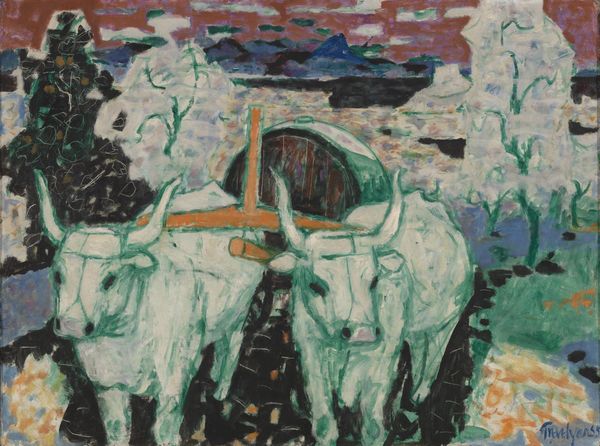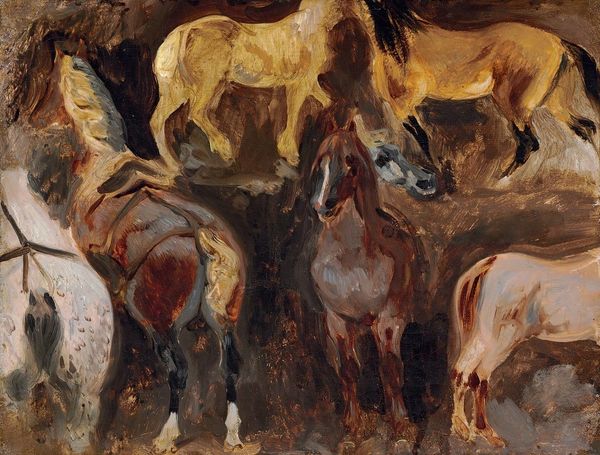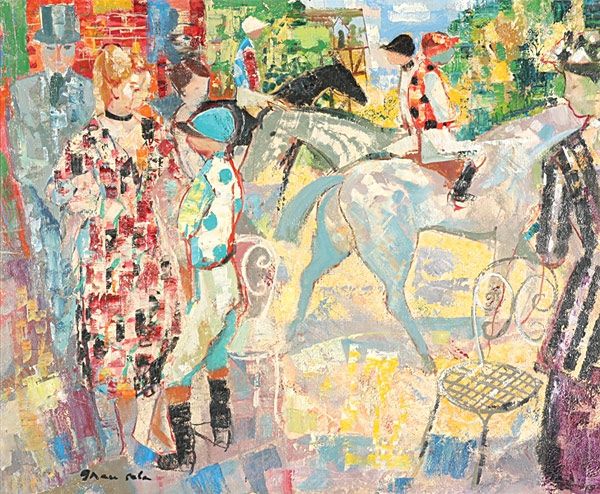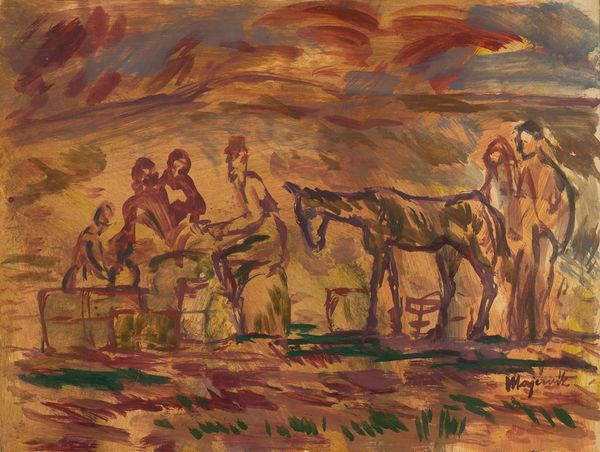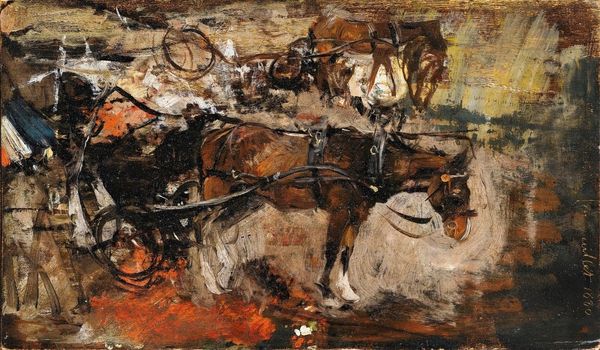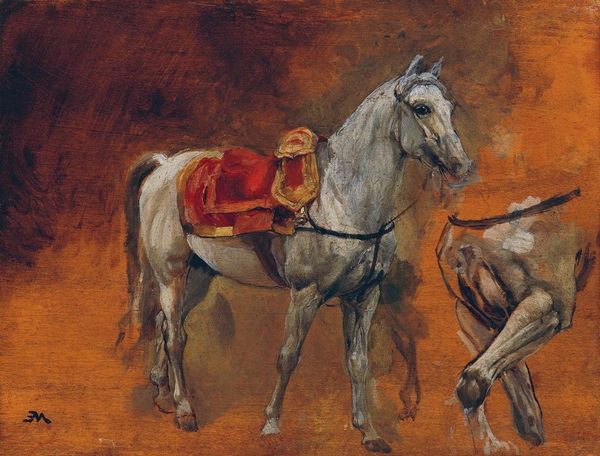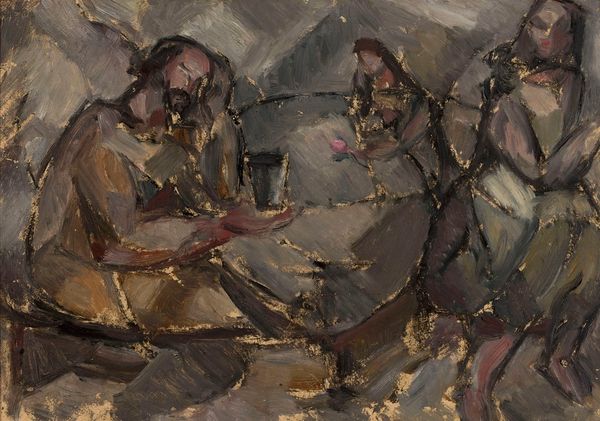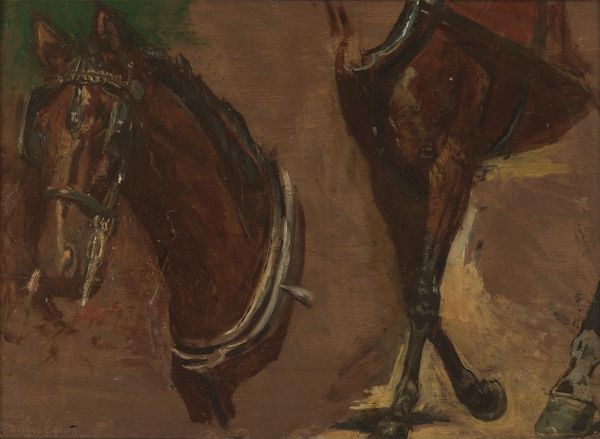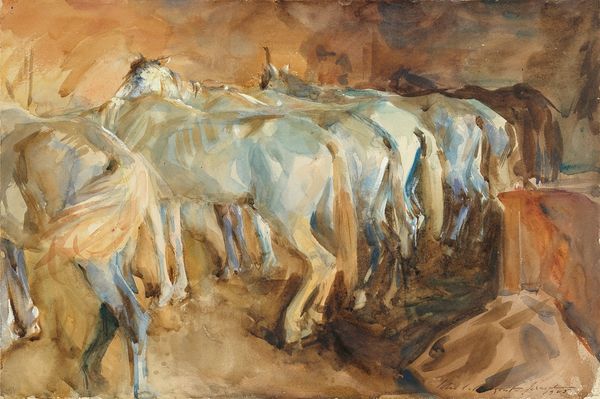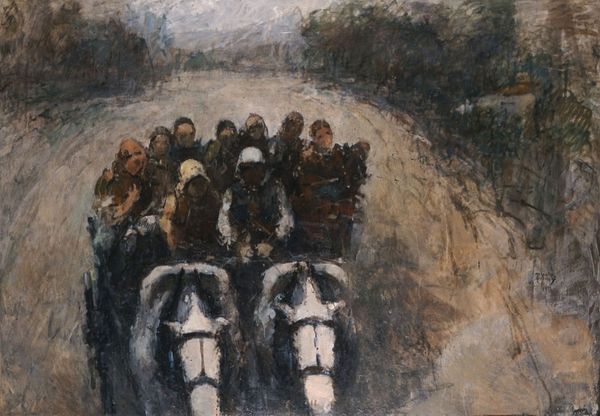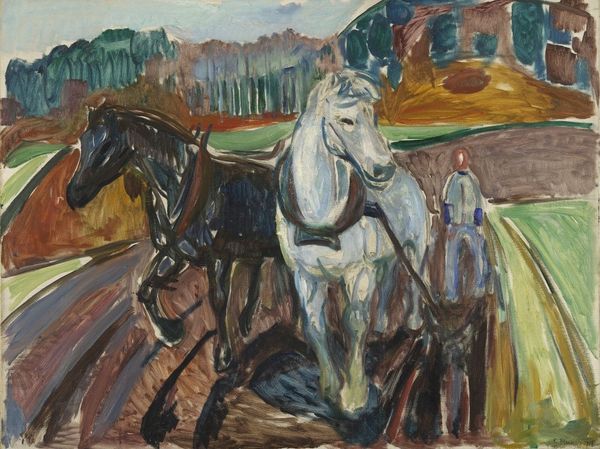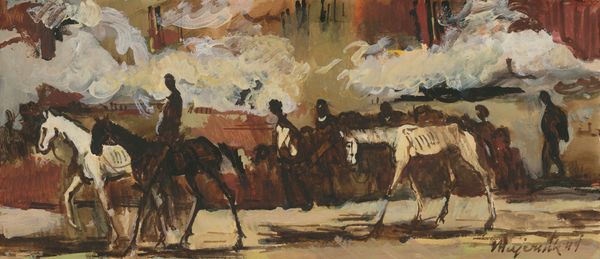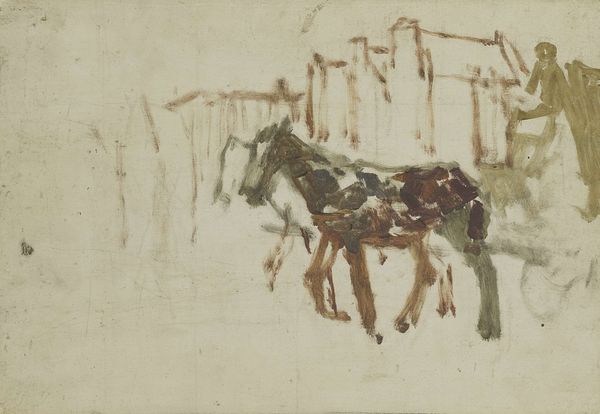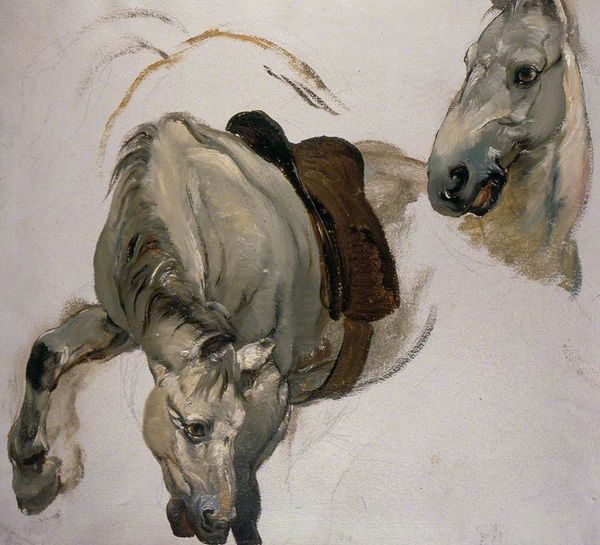
Dimensions: height 545 mm, width 755 mm
Copyright: Rijks Museum: Open Domain
Curator: This is George Hendrik Breitner's "Trampaarden op de Dam te Amsterdam" or "Tram Horses on Dam Square in Amsterdam," created in 1893. Editor: Immediately striking—it's almost claustrophobic. The close-up view of the horses, rendered in that muted palette, creates a heavy, almost oppressive feeling. Curator: Breitner's mastery lies in his capture of urban dynamism, favoring street scenes, and city life, often emphasizing mood and atmosphere through carefully constructed compositions, much as he does here with lines converging. Editor: And what about the labor and the exploitation inherent in using animals for public transport? I’m particularly drawn to the almost ghostlike faces in the background. It raises questions about visibility, about who gets seen and heard in a rapidly changing urban environment. The working class women barely registered while the horses stand prominent in their quiet exhaustion. Curator: Interesting! Though not directly stated, such reading aligns with Breitner's documented social consciousness, particularly visible in his photography of Amsterdam's working class. Look at how the muted colors lend to a sort of realism, despite the medium being watercolor. Notice how the texture and detail—in the horses’ harnesses, the city’s architecture—become significant through this formal technique. Editor: Indeed, the hazy impressionistic style actually intensifies that feeling of being stuck, both physically and socially, in a specific moment of transition. It almost feels unfinished which highlights the artist’s process and raises interesting questions regarding the subjects' process. The repetition of these animals underscores an economy that hinges on living beings. Curator: And look closely, at the application of watercolor itself: the washes and drybrush create contrasts and movement, lending a sense of immediacy. Note how each shape informs our vision with an acute specificity and attention to color temperatures. Editor: So ultimately, this artwork really prompts me to contemplate urban life at the close of the 19th century—the tension between tradition and modernity, and the invisible narratives interwoven with the relentless march of progress. Curator: Agreed; Breitner creates not just an image, but a study of color, form and space that provides much for modern audiences to reflect upon in relationship to the rapidly changing modern age.
Comments
No comments
Be the first to comment and join the conversation on the ultimate creative platform.
